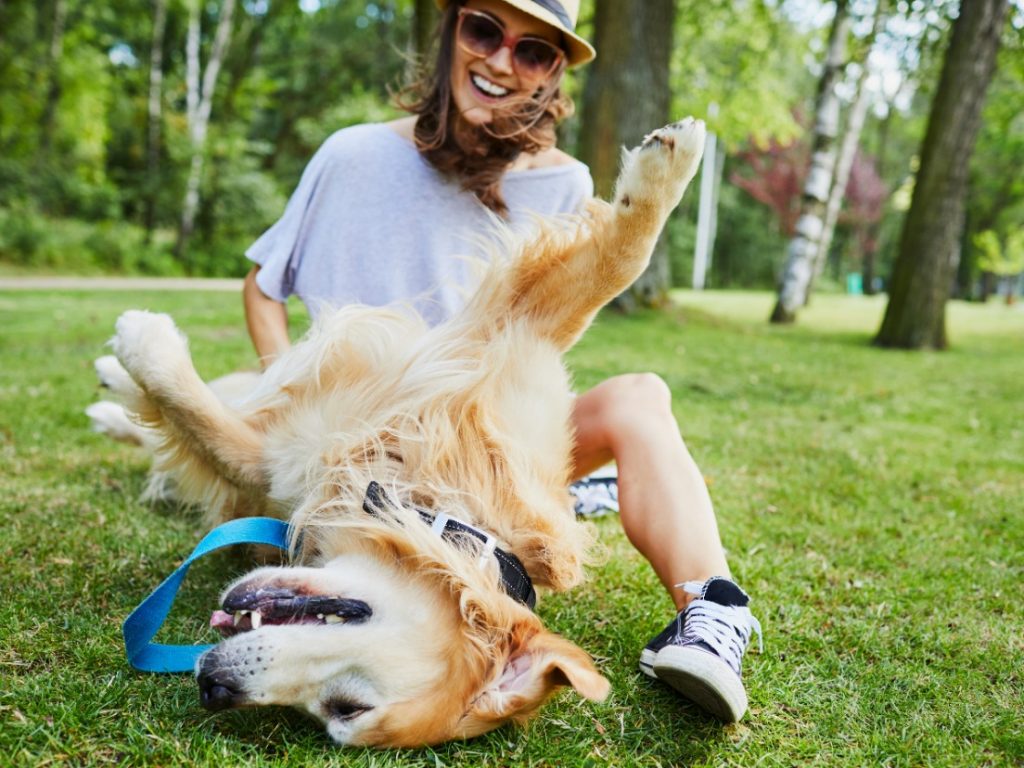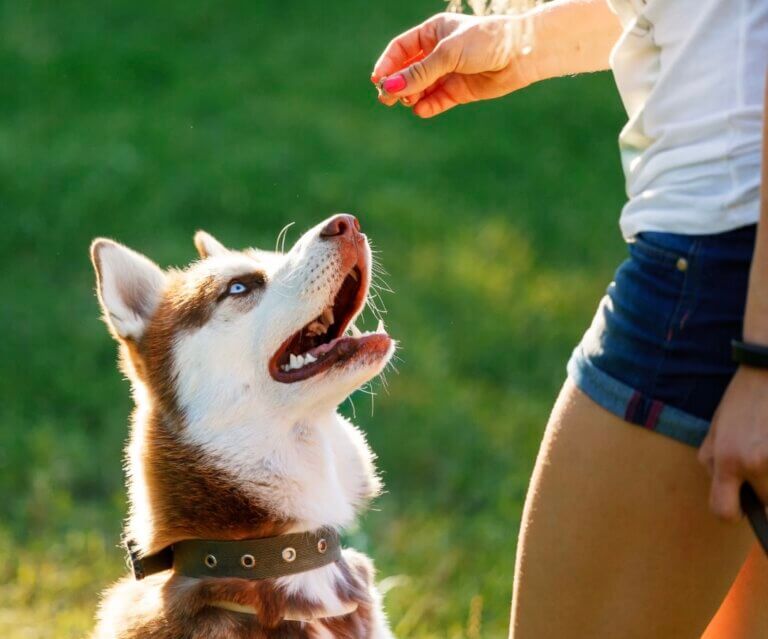However, they can also be a bit too enthusiastic that they will be jumping all over us and knocking us down occasionally.
Now, you might ask, “but what type of training is best for them?”
You see, while there are many different types of dog training methods out there, each has its proponents and detractors…
Clicker and Marker Training For Dogs.
Clicker and Marker training can be a very effective way to train your dog, but it requires patience and practice.
Plus, how they can positively improve your dog’s behaviour.
What is clicker and marker dog training, and why is it important for dogs to learn these techniques?
One of the most common questions people ask is Clicker vs Marker training.
Marker training is similar, but instead of using a clicker, you use a verbal marker (such as “yes” or “good”).
Both methods are based on the principle of operant conditioning, which means that animals can learn to associate certain behaviours with either positive or negative consequences.
Dogs need to learn these techniques because they provide a straightforward way for you to communicate with your dog.
How do you train your dog with markers and How does clicker training work?
To use a clicker or marker to train your dog, you will need to first charge the device by clicking it a few times (this is called “loading the clicker”).
For example, if you are teaching your dog to sit, you would click the clicker (or say the marker word) the instant they sit down.
As for whether a clicker or marker is better for dog training, there is no definitive answer.
Others prefer markers because they are less obtrusive and can be used more covertly.
What are some basic and many different commands you can teach using the clicker and marker method?
Here are a few examples of commands that you can teach your dog: sit, stay, come, down, rollover, and many more!
Clicker training (and marker) is a versatile method that you can use to teach your dog many different things while having fun doing it.
Plus, since clicker training is based on positive reinforcement, your dog will actually enjoy learning new things and will be more likely to obey.
What are the benefits of using clicker and marker training methods compared to other dog training techniques?
Like any other form of positive reinforcement training, dog clicker and marker training improve communication and bonds with your dog while making it enjoyable.
At what age should you start clicker training?
As young as they are, you can allow them to get used to the clicker’s sound by clicking it around them while they eat or play.
Remember, it is best to start with basic commands such as sit or come before moving on to more complex tricks.
When training your dog, are there any downsides to using a clicker or marker, and how can you avoid these potential problems?
Clicker and Marker training can work really well when teaching your dog some new tricks, however…
Not all dogs can respond well.
Most of the time, treats are a great way to get your pet’s attention and make them feel wanted.
Another potential concern dog owners may face is the fact that if the training is incomplete, it may stop them from getting the results they want.
It offers a variety of training options that can surely cater to your dog’s training needs.
There is exceptional support from dog trainers waiting for you to help you out with your dog training journey.
How long will it take for my dog to learn new commands with the help of a clicker or marker, and how often should I practice these exercises each day?
The amount of time it takes for your dog to learn new commands will vary depending on their age, intelligence, and previous training experience.
Some dogs may even be able to learn multiple new tricks in this time frame.
It is essential to practice these commands with your dog every day, or at least a few times a week, to
Some experts generally recommend around 15-20 minutes per day, but again, this may vary depending on your individual dog’s needs.

In A Nutshell
Both Clicker and Marker are excellent ways to train dogs to learn new tricks and improve their obedience.
This dog training might seem like a fad, but there’s solid science behind it that can help your pup learn new behaviours faster.
If this type of training is something you want to master, then good news…
You can get started with clicker training and marker training for dogs right here.
Be sure to let us know how your pup does in the comments below.
We love hearing about successes (and even shortcomings!) with different types of dog training.


